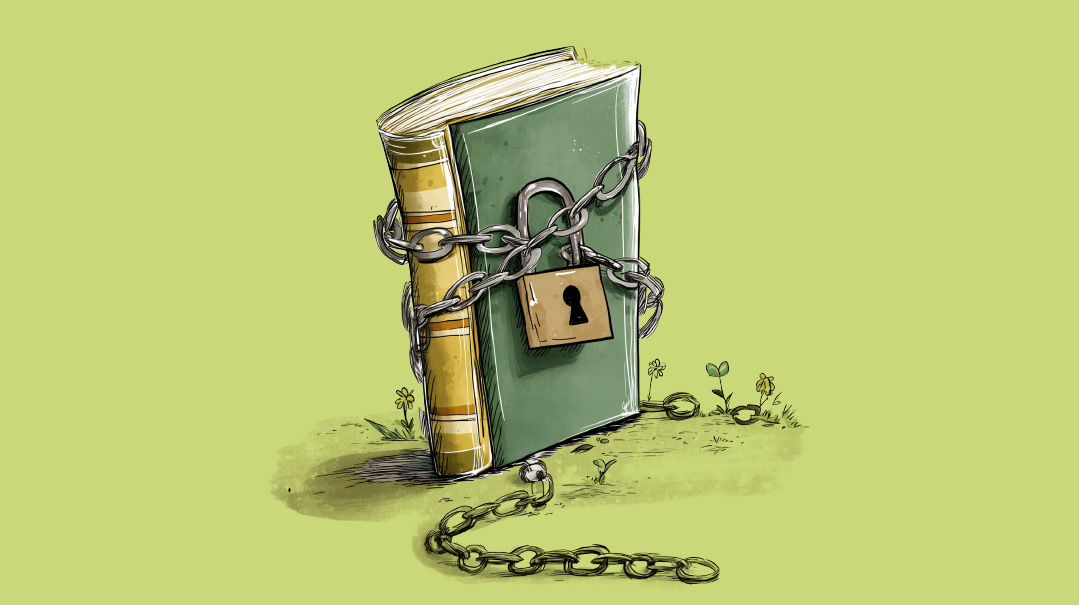Locked Out of Learning
| June 3, 2025Four perspectives on the struggle to learn to read

School’s over. And you’re already dreading next year. Because if your child couldn’t read a sentence this year, what’s going to happen when she moves up a grade and the level of learning gets higher? Will her reading issues be a roadblock to learning, davening, getting a job?
Four perspectives on the struggle to learn to read
Before They Fall
Devorah Sasson
Why reading skills are so important and what we can do to prevent students from falling between the cracks
“MYdaughter has a hard time making it through the novels her teacher assigns them.” I could hear the hesitation in my friend’s voice as she shared this with me. “She reads very slowly, and it’s hard for her to understand what she’s reading. She does better when someone else reads the text out loud. But she’s already in tenth grade… is this normal?”
This wasn’t the only such call I’d received lately. Another friend had called me the week before, distraught. It was six months into the school year, and the school had just informed her that her second grader’s reading was below grade level. How, she asked me, had this gone unnoticed until now?
As a reading specialist and literacy coach, I often receive these sorts of calls from friends. It’s clear to everyone that reading is a fundamental skill that you need in order to function in the world — reading isn’t an optional skill. Schools have the responsibility to teach students to read, and most take this responsibility seriously. During a meeting at the school where I work as a coach, the principal commented that mastering reading is pikuach nefesh. In fact, a recently published longitudinal study following students to age 20 found that illiteracy posed serious risks to physical and mental health. There’s even a term, “school to prison pipeline,” that refers to statistics showing that two-thirds of students who aren’t reading proficiently by the end of fourth grade end up in jail or on welfare. In our community, many of those involved with at-risk youth have noted the fallout for students who fail to learn how to read or remain functionally illiterate.
These statistics are sobering — but they aren’t a given. Students don’t need to fall between the cracks. We can prevent this — if we take advantage of the body of research and evidence in the area of literacy and learning and allow it to inform our practices in schools.
Until recently, much of this research wasn’t public knowledge. In October 2022, the Sold a Story podcast was released by journalist Emily Hanford. It examined methods of teaching reading that are widespread across the country but aren’t supported by research. Hanford explored the flaws of those methods, and investigated why teachers lacked the information that would lead them to effective techniques. The podcast went viral quickly.
A
round the same time, literacy research began to reach teachers and administrators. Many schools started changing their instructional approach to rely on evidence-based methods. This is particularly vital in our schools. Our dual curriculum leaves us with much less time to teach than public schools have. We can’t afford to play around and use methods that may not be effective. We need to get the most bang for our buck with the short time we have in our classrooms. We need to use methods that we know do work.
Luckily, we now have the research and knowledge to enable us to implement systems that will help every student succeed in the classroom — and beyond. One very key component of ensuring this success involves setting up systems to ensure that all students are receiving quality reading instruction and tracking students’ progress so that schools can intervene early on with students who fail to make adequate progress.
The first step in putting these systems in place is to recognize that a system is necessary. Schools often have resource rooms, but those sometimes operate separately from administrators and teachers who run the regular classroom curriculum. Educators and administrators are great at details, but don’t always step back to see the school as a system with many interconnecting parts. Some schools implement assessments, but don’t use them to inform their instruction and resource room decisions.
To ensure that reading instruction is effective, school leaders need to implement a system, which is referred to as Multi-Tiered Systems of Support (MTSS). MTSS includes an assessment system using a universal screener, tiered instruction, teaming, leadership, collaborative problem-solving, and professional learning. In tiered instruction, the main classroom teaching, which is explicit and systematic, is referred to as tier 1. When students fail to progress adequately (as identified by the universal screener delivered three times a year), schools intervene with tier 2 support (often delivered by resource room), which supplements the tier 1 instruction. A small group of students who don’t progress in tier 2 will need even more intense support, which is referred to as tier 3.
Here’s how the tiers might play out in an imaginary first grade classroom at Yeshivas Alef Beis. Ideally, at least 80 percent of the students should make progress with tier 1 instruction, or the regular reading program used in the classroom. All 24 students in the class are screened three times a year using a brief screener called Acadience Reading. (Like any screener used in MTSS, Acadience is reliable and valid. That means it was tested in its ability to consistently measure the same things in the same way and get a picture of skills, regardless of who administers the screener.) Think of a screener as a quick health check — not a full checkup from a physician, but more like a nurse checking your vital signs to get an idea of your overall health.
The screener is also predictive: It lets the staff in Yeshivas Alef Beis know which students are at risk, so that they can work on changing that outcome. Screeners such as Acadience also include benchmark goals. That means they’re criterion referenced, asking, “Does this student have enough of this essential skill that so that he can be okay in the future?” The skills screened change over time with grade-level expectations. For example, when the first graders are screened at the beginning of the year, they’ll be asked to segment sounds in words and read nonsense words. At the middle of the year, they’ll be asked to read nonsense words, but they will also read a grade-level passage for one minute and retell what they read. Research shows that in nine out of ten students, oral reading fluency correlates with comprehension.
Back to that first-grade classroom: At the beginning of the year, the teacher, Morah Yehudis, analyzed the screening results together with administrators. They found that about 20 percent of the class was below the benchmark for grade-level reading and needed tier 2 intervention. Four boys — Shloimy, Chaim, Avi, and Tuvia — had certain weaknesses in phonics and phonemic awareness and would benefit from being pulled out for supplemental reading instruction. Morah Yehudis will also supplement the regular instruction with more phonics and phonemic awareness.
Over the next few weeks, the boys are monitored to ensure they are progressing. The team (the head of resource room/student support, Morah Yehudis, and other administrators) creates a schedule to check in periodically to ensure the reading intervention instruction is working and monitor their progress to see if any of them need more intense intervention. After six weeks, Shloimy, Avi, and Tuvia are all progressing adequately with Morah Yehudis’s reading intervention, but Chaim is not. He’ll need tier 3 instruction.
Oops! We could not locate your form.







